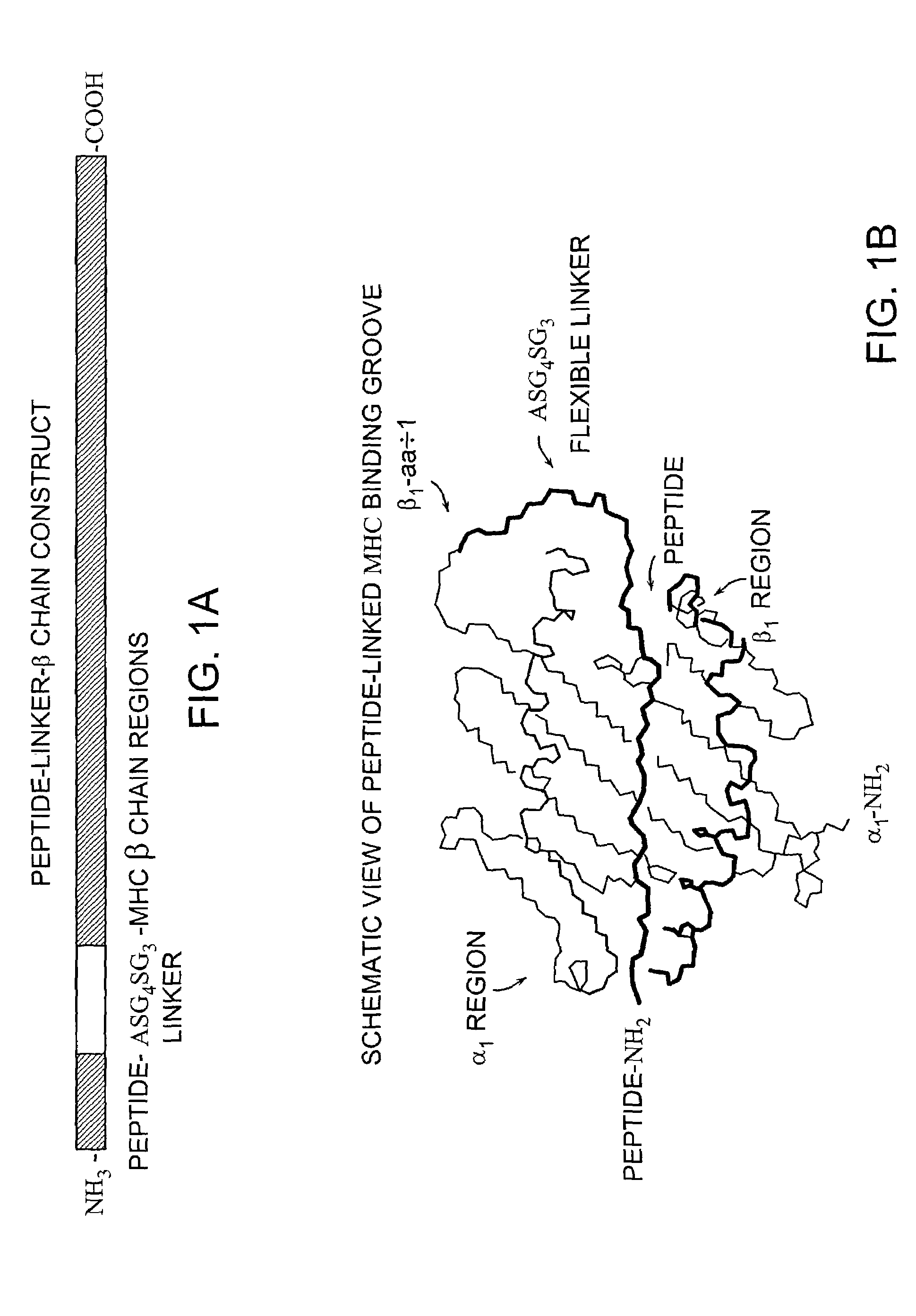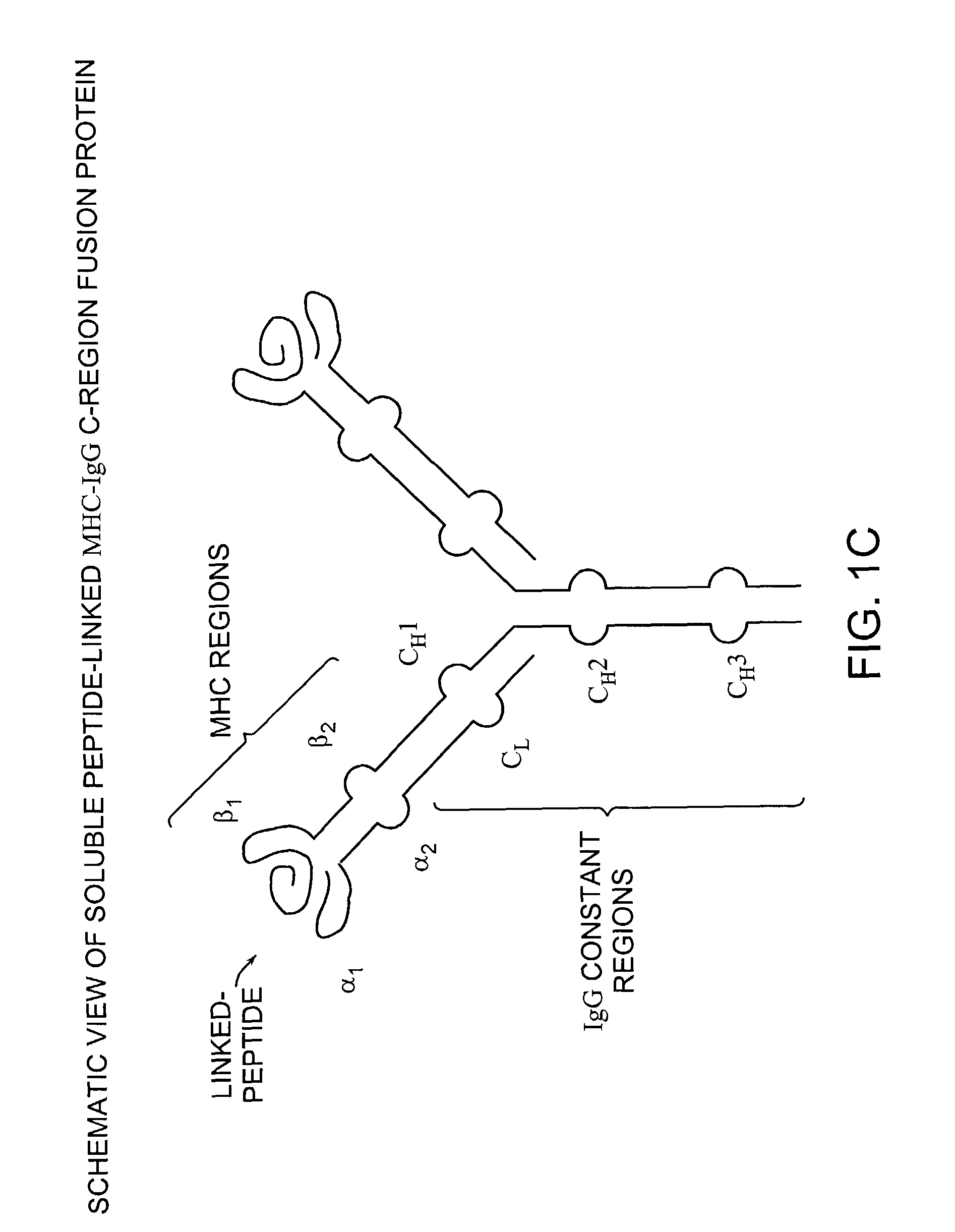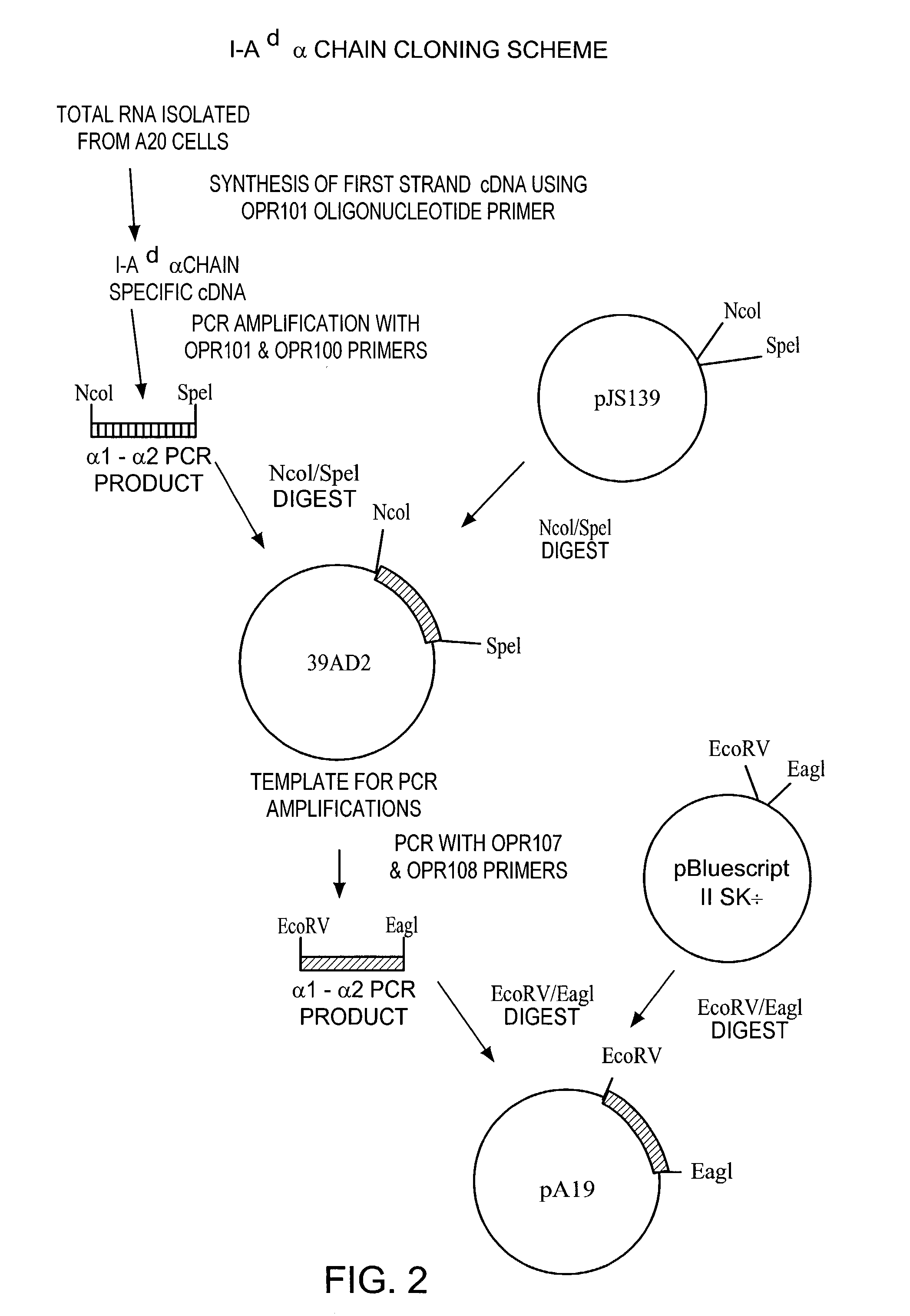MHC complexes and uses thereof
a histocompatibility complex and complex technology, applied in the field of new molecules, can solve the problems of tightly bound loaded peptides and inability to efficiently exchange, and achieve the effects of enhancing the yield and stability of molecules, increasing stability, and easy affinity purification
- Summary
- Abstract
- Description
- Claims
- Application Information
AI Technical Summary
Benefits of technology
Problems solved by technology
Method used
Image
Examples
examples 1a – 1f
EXAMPLES 1A–1F
Construction of Soluble MHC Fusion Complexes of the Invention
[0127]MHC class II-peptide fusion vectors for expressing soluble MHC class II molecules with covalently linked presenting peptides were prepared as described below in Examples 1A–1F. The MHC class II genes used to prepare the following MHC fusion complex constructs were isolated by PCR amplification of cDNA generated from the appropriate Antigen Presenting Cell (APC), as shown in FIGS. 2–8 of the Drawings.
example 1a
[0128]For the I-Ad genes, total RNA was isolated from the mouse B cell lymphoma A20 cell line. Briefly, 1×108 A20 cells (ATCC TIB 208) were homogenized in 6 ml of ice cold 4 M guanidinium thiocyanate, 0.1 M Tris-Hcl, Ph 7.5 using a Tissue Tearer homogenizer for 5 minutes. Following homogenization, sarcosyl was added to a final concentration of 0.5% and the solution was mixed thoroughly. The homogenate was centrifuged at 5000 g for 10 minutes and the supernatant was brought up to 10 mls with 4 M guanidinium thiocyanate, 0.1 M Tris-Hcl, Ph 7.5, 0.5% sarcosyl buffer. The supernatant was gently layered on top of a 3.5 ml cushion of 5.7 M CsCl, 0.01 M EDTA, pH 7.5 in an SW41 clear ultracentrifuge tube. The samples were centrifuged in an SW41 rotor at 32,000 rpm for 24 hours at 20° C. Following centrifugation, the supernatant was carefully removed and the RNA pellet was washed with 70% ethanol. The RNA was dissolved in 350 μl of DEPC-treated water containing 40 units of RNasin (Promega). ...
example 1b
[0129]The following approach was employed to isolate the I-Ad β1-β2 gene fragment (encoding aa1 to 189), attaching the linker sequence and inserting the oligonucleotides encoding the antigenic peptides. This approach also is depicted in FIG. 3 of the Drawings. The A20 total RNA (10 μg) was converted to cDNA by using Superscript-MLV Reverse Transcriptase (GIBCO-BRL) and oligo dT-specific priming according to manufacturer's procedures. Of the 20 μl of cDNA generated, 2 μl was used as template DNA for PCR. The reactions were carried out as described above except oligonucleotide primers were OPR102 and OPR104 (see FIG. 8 of the Drawings) and the PCR conditions were 10 thermal cycles of 60° C. for 1 minute, 70° C. for 1 minute, and 96° C. for 1 minute followed by 40 step cycles of 70° C. for 1 minute and 96° C. for 1 minute. The initial β1-β2 PCR product (approximately 570 bp) was designed to be cloned into the bacterial expression vector, pJRS139. The PCR products were digested with Nco...
PUM
| Property | Measurement | Unit |
|---|---|---|
| molecular weights | aaaaa | aaaaa |
| molecular weights | aaaaa | aaaaa |
| molecular weights | aaaaa | aaaaa |
Abstract
Description
Claims
Application Information
 Login to View More
Login to View More - R&D
- Intellectual Property
- Life Sciences
- Materials
- Tech Scout
- Unparalleled Data Quality
- Higher Quality Content
- 60% Fewer Hallucinations
Browse by: Latest US Patents, China's latest patents, Technical Efficacy Thesaurus, Application Domain, Technology Topic, Popular Technical Reports.
© 2025 PatSnap. All rights reserved.Legal|Privacy policy|Modern Slavery Act Transparency Statement|Sitemap|About US| Contact US: help@patsnap.com



